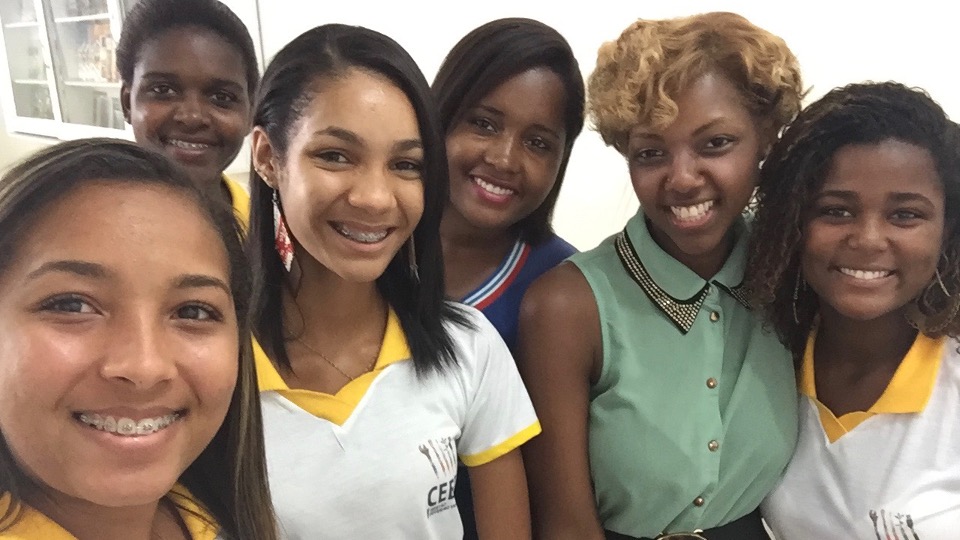Positive Racial Identity of Black Brazilian and Colombian Adolescents Amidst Systems of Educational Oppression
I am Black and proud of it. I was born this way and I'm really proud of my race because of everything that we've fought for. Brazil was the last country to end slavery. In theory, we've ended slavery but many of us still work hard for food and shelter because we don't have any other option (18-year-old Brazilian student; Harris, 2021).
Upholding a strong sense of pride is no small endeavor when it feels like the world is against you. Yet many Black youth courageously embrace both the challenges and the cultural strengths of their heritage.
In my paper, Positive Racial Identity of Black Brazilian and Colombian Adolescents Amidst Systems of Educational Oppression, I detail how multicultural policies have been strategically used to disseminate a discourse of racial, political, and economic utopia. However, literature indicates that systemic inequalities and discriminatory practices based on race and skin color persist despite national ideologies of racial harmony [1, 2].
Purpose of Study
This study was inspired by a trip that I’d taken to Brazil after teaching English at a high school in Chile. While in São Paulo, Brazil, I had conversations with many young Brazilians who shared that racism wasn’t a problem there the way that it is in the United States. However, based on my own observations in São Paulo and Rio
 de Janeiro, I witnessed that many darker skinned Brazilians occupied service positions while lighter skinned Brazilians held leadership and business positions. The dissonance that I experienced led me to discover research on the myth of racial democracy in Brazil and other Latin American countries such as Colombia. I questioned whether this racially democratic discourse minimized experiences of systemic oppression, specifically in secondary education.
de Janeiro, I witnessed that many darker skinned Brazilians occupied service positions while lighter skinned Brazilians held leadership and business positions. The dissonance that I experienced led me to discover research on the myth of racial democracy in Brazil and other Latin American countries such as Colombia. I questioned whether this racially democratic discourse minimized experiences of systemic oppression, specifically in secondary education.
Theory
I used a strengths-based model, Spencer’s Phenomenological Variant of Ecological Systems Theory [3], to understand how adolescents use interpersonal strengths and environmental resources to navigate racial and color oppression. The theory concedes that all humans are vulnerable; however, the degree to which individuals navigate vulnerabilities depends on a balance between risk factors and protective factors. Thus, adolescents considered to be at risk because of their social environment may have protective factors that buffer or offset these risks.
Methods
Study procedures included: (1) selecting two cities with high African descent populations and high economic inequality in Brazil (Salvador) and Colombia (Cartagena); (2) selecting 10 schools throughout each city with students from various socioeconomic backgrounds; (3) recruiting Brazilian and Colombian students enrolled in their final year of high school; (4) administering surveys in Portuguese and Spanish; and (5) conducting semi-structured individual interviews. This blog is focused on key findings from the survey data.
Data Collection Experience
“I never thought I’d meet a Black American until I met you” (16-year-old Colombian student). As an African American conducting research with Black youth abroad, I anticipated experiencing a cultural connection with the students. However, I did not anticipate the lines of students who waited outside of classrooms to interview with me. Students were fascinated to speak with someone from the U.S. who looked like them and also spoke their language. They were eager to teach me about their culture and their day to day lives. Although I sought out to recruit 400 participants, the final study sample included 737 students.
Findings
The results highlighted racial and color oppression that exists today. Findings on self-reported skin tone and discrimination illustrated that Brazilian and Colombian participants of darker skin tones were significantly more likely to report experiencing discrimination than those of lighter skin tones. For example, 69% of light skinned Brazilian participants reported never experiencing discrimination compared to 30% of dark skinned participants. Comparatively, 24% of dark skinned participants experienced frequent discrimination compared to 2% of light skinned participants.
Participants used interpersonal cultural strengths to withstand oppression. Brazilian students of African descent (79.3%) and darker skin tones (76%) were significantly more likely to report racial pride than European descent (14.3%) and light skinned students (21.7%). Previous research has suggested racial pride as a protective factor against racism; however this study illustrates a potential benefit of racial pride as a coping mechanism for colorism.
Key Takeaways
How can scholars minimize risk factors associated with systemic oppression among Black youth? Research should aim to identify risk factors and protective factors associated with the psychological impact of discrimination on African descent youth globally. Furthermore, strengths based models that humanize the experiences of racially marginalized youth are imperative to advance developmental science [3].
The full study can be found at:
Harris, K.L. (2021). Positive racial identity of black brazilian and colombian adolescents amidst systems of educational oppression. Journal of Research on Adolescence, 1-18.
Footnotes and Other Suggested Resources
I Wish I Were Light Skinned Like You: Colorism in the U.S. and Latin America could also be useful for readers interested in learning more about colorism.
1. Telles, E. (2014). The project on ethnicity and race in latin america (PERLA): Hard data and what is at stake: In Pigmentocracies: Ethnicity, Race, and Color in Latin America. Chapel Hill, North Carolina: University of North Carolina Press.
2. Paschel, T. S., & Sawyer, M. Q. (2008). Contesting politics as usual: Black social movements, globalization, and race policy in Latin America. Souls, 10(3), 197-214.
3. Spencer, M. B., Dupree, D., & Hartmann, T. (1997). A phenomenological variant of ecological systems theory (PVEST): A self-organization perspective in context. Development and Psychopathology, 9 (4), 817-833.
Author: Keshia Harris


